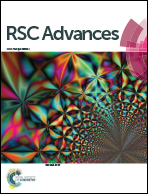Properties and applications of flavonoid metal complexes
Abstract
Flavonoids are widely occurring polyphenol compounds of plant origin with multiple biological and chemical activities. Due to the presence of carbonyl and hydroxyl groups they can coordinate metal ions and form complexes. Metal complexes of flavonoids have many interesting properties: they are colored, often fluorescent, anti- or pro-oxidant, antimicrobial, antiproliferative and biologically active in many other ways. There are many papers covering specific aspects of activity of flavonoid metal complexes, e.g. their antioxidant properties, enzyme-mimicking behavior, therapeutic potential or use in chemical analysis. However, for a researcher interested in this theme, it would be useful to find an extensive review on more than one selected area. Our aim was to cover a wide spectrum of possible activities and potential applications of flavonoids coordinated to metal ions in order to give our readers a broad view on the topic of this class of compounds, their activity and potential applications. While a significant amount of information on the chemical properties and biological activity of flavonoid metal complexes can be found in the literature, an in-depth understanding of structure–property relationships is still lacking. In an attempt to address this issue, a comprehensive discussion of the available data is presented.


 Please wait while we load your content...
Please wait while we load your content...